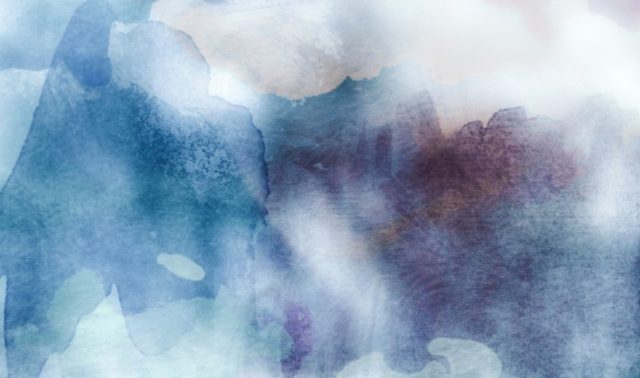Watercolor painting is a challenging medium. It’s difficult to find the right paint and paper, it can be hard to get the colors just right, and it takes time to learn all of the tricks that make watercolor painting so exciting! You may be an expert watercolor painter with years of experience, or you may have never picked up a brush and dipped it in paint.
Either way, there are some secrets to painting that you should know about before starting your next masterpiece. This blog post will give you some tips on how to use watercolors as well as some other resources for learning more about this art form.
- Choose a color palette of your choice: If you are painting with watercolors for the first time, it’s best to choose a color palette of your choice. You have many choices available in paints and paper so there should be no problem finding what you want! If you’re not sure about which colors to use, try using complementary colors such as red and green or purple and yellow.
- Use more paint than paper: It may seem counterintuitive, but when it comes to watercolor painting, less is actually more! When applied correctly, each brushstroke can look like a thin layer of beautiful color without having too much paint on the page. That means that if you put down one stroke over top of another, then they’ll blend together instead of creating two strokes where only one was supposed to be.
- When painting, stay in the lines: When you’re using watercolors to paint with, it’s a good idea to adhere to your boundaries! Watercolor paints are not opaque, and if you go outside of the lines that have been drawn for you, then they’ll mix together or create blotches where only one color was supposed to be visible. Go slowly when painting so that this doesn’t happen, and use a small brush instead of something like an eraser because it will cause less damage if accidents do occur.
- Get rid of mistakes as soon as possible: Mistakes can really mess up your project quickly! Unfortunately, there isn’t much time before things get messy and hard-to-fix, but fortunately, there is still some hope for those mistakes. Fixing mistakes is a lot easier if you just wipe the area with water or blot it gently and then use a dry brush to paint over the mistake, creating another layer of color!
- Experiment: Watercolor painting can be difficult but don’t let that get in your way from having fun on your next project. Experiment with different things like adding layers of colors next to each other instead of mixing them together, trying out backgrounds using acrylics as opposed to watercolors, or even experimenting by taking away all your tricks for an almost abstract piece! When it comes to this medium, you get endless possibilities, so have some patience while learning new skills, and remember there’s always something more you can do before starting over.
- Start with natural elements: Painting nature has always been the first instinct for most watercolor painters. Starting with a collection of leaves, flowers, or other types of natural elements can be an enjoyable and productive way to practice your skills while trying out new techniques. You can check out different color combinations of green, blue, indigo, purple, and several others that make up natural elements.
- Explore the watercolor pallet: there are so many colors available in a typical watercolor collection that it can be hard to narrow down your favorite. One way to do this is by combining them with other paint or mediums such as markers, ink pens, and more! Try experimenting with different techniques like using a fuzzy brush for soft lines and hard edges or an old toothbrush for less control over the blend of color.
- Use resist technique: A strong point of watercolors is their ability to show through layers when you want it to. This technique can be used on both paper and fabric, which allows room for mistakes without wasting any supplies. Simply lay some wet paint onto one layer before adding new ones on top – or use a watercolor pen for more control.
- Fix mistakes: If you make a mistake while painting with watercolors, don’t worry! It’s easy to fix wet paint by using your fingers or the brush (wet) with some white pigment and adding it to where there is too much color. After that dries, go back in and erase any marks left on the paper from fixing your previous error.
- Learn about mixing colors: For watercolor paintings, you’ll need to mix your own pigments. A good way to do this is by using a palette knife and rubbing it across the pigment until all of its colors have been transferred onto the surface below. You can then add more paint into that area or an additional layer over the top for even more depth in your painting.
- Protect yourself from paints: When working with watercolors, always make sure there’s enough ventilation in the room – as well as dry materials nearby (paper towels) if things start getting too wet!
- Work in small sections, don’t paint too much at once, or it will dry out: Painting in sections is the best way to avoid having a fully dried painting. You’ll be able to work more slowly and apply water or fix mistakes before finishing up too much at once!
- Don’t mix your paints: Different pigments have different properties, so mixing them can often lead to strange colors that you won’t want for your masterpiece. Instead, try sticking with one pigment until it’s time to add another color when necessary (such as yellow over blue).
- Don’t be afraid of colorless dyes: If there are two pigments next to one another that always mix, you can use a dye that is colorless to keep them separate. This is an excellent way to keep your colors bright and alive as well!
- Try painting with water: There are several ways you can do this, but the most common technique is to paint with diluted turpentine or mineral spirits. This will give your paintings more transparency and wetness without allowing them to be overly sloppy-looking. You can also utilize a spray bottle of water on top of an area that has been painted; this helps blend colors together so they don’t look too stark against one another.
Conclusion:
Watercolors are a unique medium that takes time to master, but they’re also full of fun secrets. So don’t be afraid – give it a try and see what you can create!

A professional writer with over a decade of incessant writing skills. Her topics of interest and expertise range from health, nutrition and psychology.




